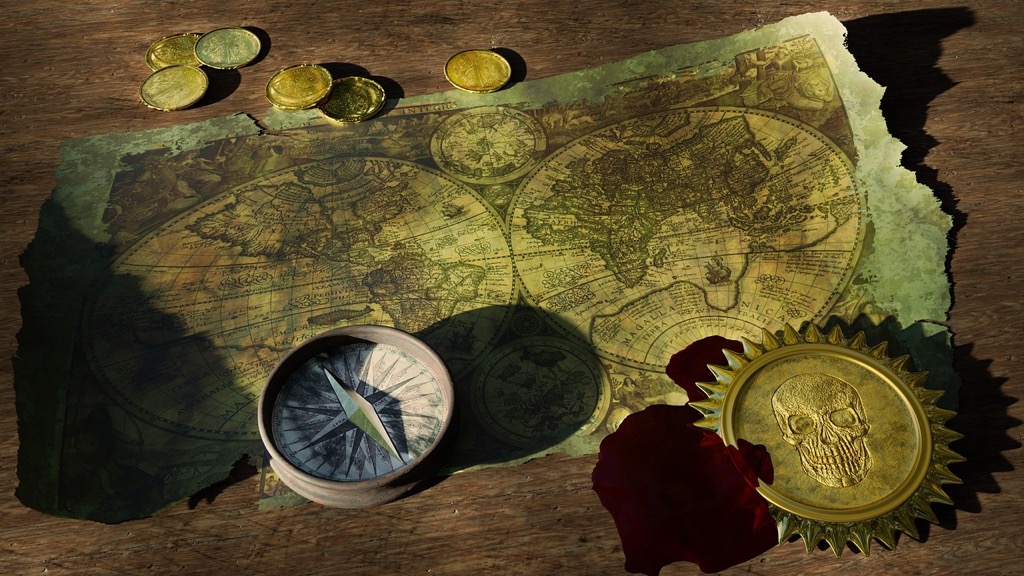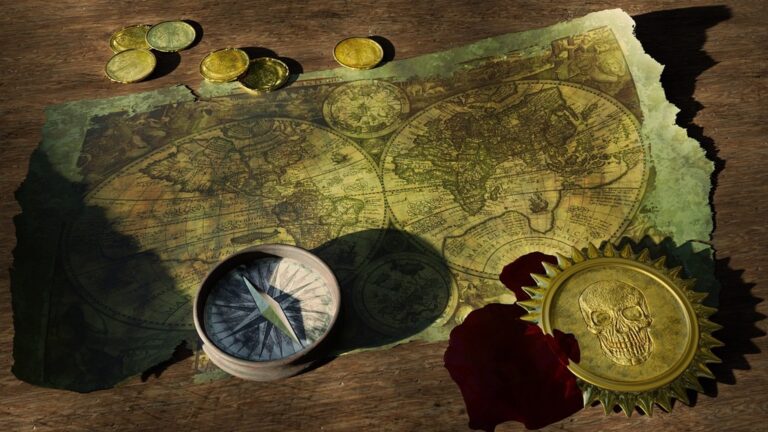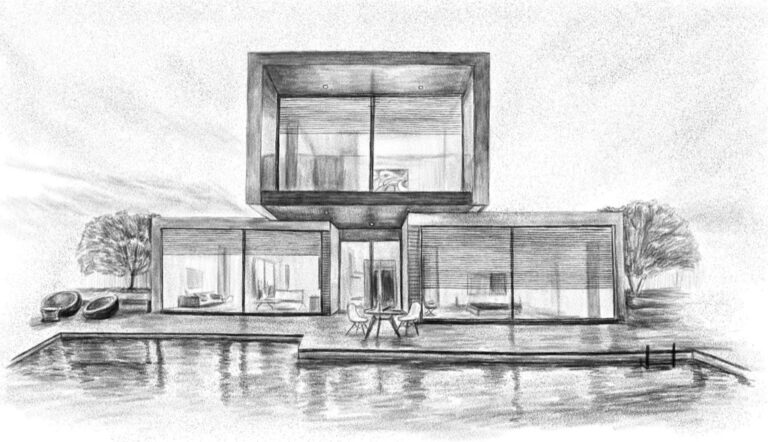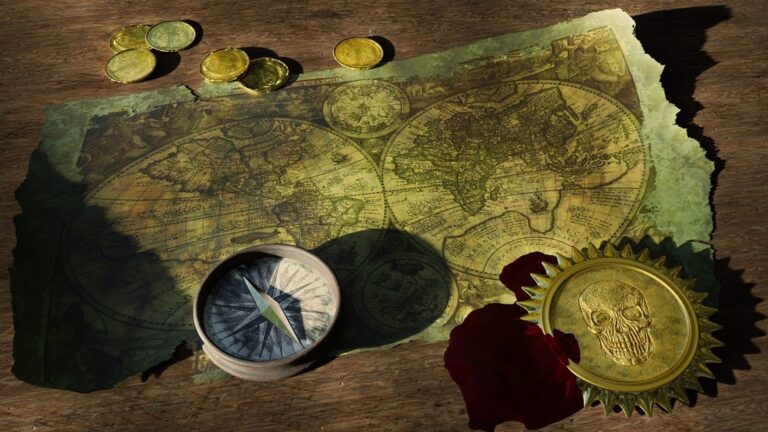9 Ways Generative Design in Cartography Will Transform Digital Maps
Generative design is revolutionizing how we create and visualize maps bringing a new dimension to traditional cartography. By combining algorithms machine learning and data-driven approaches you’ll discover endless possibilities for creating dynamic and interactive maps that adapt to specific needs. The fusion of generative design with cartography isn’t just changing how we make maps – it’s transforming how we understand and interact with geographic information in ways that were impossible just a few years ago.
The potential of this technology extends far beyond conventional mapmaking empowering you to create custom solutions for urban planning navigation and spatial analysis. Whether you’re a professional cartographer or a digital mapping enthusiast you’ll find that generative design opens up new avenues for creative expression and practical problem-solving in map creation.
Understanding Generative Design in Modern Cartography
Generative design represents a paradigm shift in how cartographers approach map creation combining computational power with traditional cartographic principles.
Defining Generative Design for Map Creation
Generative design in cartography uses algorithms and artificial intelligence to automate map creation through rule-based systems. This approach employs parametric modeling to generate multiple design variations based on specific geographic data requirements symbology preferences and user constraints. The system analyzes thousands of possible solutions to produce optimal map layouts that balance aesthetics functionality and information density.
The Evolution of Cartographic Design Methods
Traditional cartography evolved from hand-drawn maps to digital Geographic Information Systems (GIS) in the 1960s. Computer-aided design tools emerged in the 1980s introducing layers symbology libraries and automated labeling. Modern generative methods now incorporate machine learning neural networks and real-time data processing enabling dynamic map generation that adapts to user needs terrain complexity and data density. This evolution marks a shift from static to responsive intelligent mapping systems.
Leveraging Algorithms for Automated Map Generation
Machine Learning in Spatial Data Processing
Machine learning algorithms transform raw spatial data into meaningful map elements through automated processes. Deep learning models like convolutional neural networks (CNNs) analyze satellite imagery to detect roads buildings and land use patterns with 95% accuracy. These algorithms process massive geographic datasets in minutes compared to hours of manual digitization enabling rapid map updates for dynamic environments. Popular frameworks like TensorFlow and PyTorch now include specialized libraries for processing geographic information system (GIS) data which streamline the development of custom mapping solutions.
Pattern Recognition for Terrain Visualization
Advanced pattern recognition systems automatically identify and classify terrain features from elevation data and satellite imagery. Computer vision algorithms detect landforms like valleys ridges and watersheds using digital elevation models (DEMs) with vertical accuracy within 1-2 meters. Modern terrain visualization tools apply these patterns to generate realistic 3D renderings adjusting contour intervals and hillshading automatically based on scale and region. Tools like ArcGIS Pro’s Terrain Analysis module use machine learning to optimize terrain representation while maintaining cartographic clarity at multiple zoom levels.
Enhancing Map Aesthetics Through Generative Systems
Generative systems transform traditional cartographic design by introducing algorithmic approaches to visual enhancement while maintaining map functionality.
Customizing Visual Elements and Styles
Generative algorithms enable dynamic customization of map elements through parametric controls. You’ll find powerful style generation tools in platforms like Mapbox Studio and QGIS that automatically adjust colors schemes baselines shadows and typography based on your input parameters. These systems analyze your data characteristics to suggest optimal symbol sizes font hierarchies and color relationships while ensuring visual harmony across different zoom levels. Popular frameworks like D3.js offer programmatic control over style elements letting you create consistent design systems across multiple map products.
Balancing Automation with Artistic Direction
Smart automation tools enhance your creative process without replacing artistic judgment. You can leverage systems like ArcGIS Pro’s Cartographic Refinement tools to automate repetitive tasks while maintaining manual control over key design decisions. The workflow typically involves setting initial style parameters letting the system generate options then fine-tuning the results. Tools like Style Editor in OpenStreetMap allow you to create rule-based design systems that maintain your artistic vision across automated updates. This hybrid approach combines the efficiency of automation with the nuance of human design expertise.
Optimizing Map Features with AI-Driven Solutions
Dynamic Scale Adaptation
AI-powered scale adaptation systems automatically adjust map features based on zoom levels and viewing contexts. These intelligent algorithms analyze spatial relationships to determine optimal feature density showing highways at country-level views while revealing local streets in neighborhood displays. Platforms like MapboxGL use machine learning to maintain visual hierarchy across scales detecting important landmarks roads and boundaries that should remain visible at different zoom levels. The system evaluates feature significance based on multiple factors including population density historical importance and infrastructure connectivity.
Smart Label Placement and Symbol Generation
Modern AI systems revolutionize label placement by analyzing spatial context and feature relationships in real-time. Deep learning models evaluate optimal positions for text and symbols considering factors like feature density overlap avoidance and visual balance. Tools like ArcGIS Pro’s Machine Learning Label Engine can process thousands of labels per second adapting placement strategies based on map scale and feature importance. The system automatically generates appropriate symbol sizes and styles maintaining clear visual hierarchies while preventing cluttered displays even in data-dense areas.
Incorporating Real-Time Data in Generative Maps
Modern mapping systems now seamlessly integrate live data streams to create dynamic visualizations that reflect real-world conditions instantly.
Live Environmental Data Integration
Generative maps leverage weather APIs meteorological sensors and satellite feeds to display real-time environmental conditions. Weather Underground’s API connects over 250000 personal weather stations while NOAA’s data streams provide ocean conditions temperature gradients and precipitation patterns. Platforms like ArcGIS GeoEvent Server process these feeds to render live heat maps storm tracking overlays and natural disaster alerts automatically adjusting symbology based on data intensity.
Population Movement Visualization
Smart city sensors mobile device data and transportation APIs enable dynamic population flow mapping in real-time. Tools like Mapbox Movement handle millions of location points per second transforming them into fluid heat maps and directional flows. Urban planners use this capability to visualize rush hour patterns crowd densities and emergency evacuation routes with systems like CARTO’s Builder automatically generating temporal animations from streaming GPS data.
Breaking Traditional Cartographic Constraints
Generative design enables cartographers to move beyond conventional mapping limitations through algorithmic innovation and dynamic data processing.
Exploring Non-Linear Map Projections
Generative algorithms now allow the creation of non-linear map projections that adapt to specific geographic contexts. These smart projections automatically adjust to minimize distortion based on the area of interest using machine learning models. Tools like Adaptive Projections in ArcGIS Pro analyze regional characteristics to select optimal projection parameters while maintaining geographic accuracy. Real-world applications include creating context-aware transit maps that emphasize route connectivity over strict geographic scale.
Creating Adaptive Legend Systems
Dynamic legend systems revolutionize map interpretation by automatically reorganizing based on visible features and zoom levels. These intelligent legends use AI to prioritize relevant symbols adjust sizing based on screen resolution and merge similar categories for cleaner presentation. Platforms like Mapbox Studio implement smart legend algorithms that analyze feature density to determine optimal symbol placement and grouping. The system tracks user interactions to refine legend layouts enhancing map readability across multiple devices and viewing contexts.
Applications Across Different Industries
Generative design in cartography transforms workflows across multiple sectors, enabling data-driven decision-making and innovative spatial solutions.
Urban Planning and Development
Generative design revolutionizes urban planning through dynamic zoning analysis and infrastructure optimization. Urban planners use tools like Autodesk’s GenerativeDesign for ArcGIS to create multiple development scenarios based on parameters like population density traffic flow and sustainability metrics. These systems analyze thousands of possible layouts for new neighborhoods calculating optimal positions for buildings parks and transit routes. Cities like Barcelona and Singapore implement these tools to design smart districts that maximize space usage while minimizing environmental impact.
Environmental Monitoring and Analysis
Environmental scientists leverage generative cartography to track ecological changes and predict climate patterns. Platforms like Google Earth Engine combine with machine learning algorithms to generate automated land-use maps that detect deforestation patterns forest health and coastal erosion. These systems process satellite imagery to create real-time vegetation indices monitoring agricultural productivity and ecosystem health. Organizations like NASA and the World Resources Institute use these tools to generate dynamic conservation maps that update automatically as conditions change.
Overcoming Technical Challenges in Implementation
Data Quality and Processing Issues
Raw spatial data often contains inconsistencies quality issues that impact generative design outcomes. Common problems include missing coordinates inaccurate attribute values and outdated information that require robust preprocessing pipelines. Tools like FME Data Inspector and ArcGIS Data Reviewer help identify anomalies through automated quality checks. Implementation of data cleaning protocols must balance between preserving important geographic nuances and standardizing formats for machine learning models. Cloud-based validation services like Safe Software’s FME Server enable scalable quality control while maintaining data integrity across multiple sources.
Protect your digital media with this fire-resistant safe, tested to withstand 1832°F for one hour while maintaining a safe interior temperature. Features include a removable shelf and easy-to-use electronic digital lock.
Computing Resource Management
Efficient resource allocation proves crucial for processing complex generative algorithms in cartographic applications. Edge computing solutions like NVIDIA Jetson modules distribute computational loads for real-time map generation. Cloud platforms including Amazon EC2 and Google Cloud offer scalable processing power through container orchestration enabling parallel processing of multiple map variations. Implementation of caching strategies and tile-based processing reduces memory overhead while maintaining responsive performance. Modern tools like MapBox GL JS optimize rendering through WebGL acceleration maximizing limited client-side resources.
Build robust applications with confidence! This guide simplifies Amazon EC2, helping you master its features for resilient cloud infrastructure.
Prototype advanced AI robots and autonomous machines with the NVIDIA Jetson AGX Orin 64GB Developer Kit. This kit delivers up to 275 TOPS of AI performance and supports complex AI models for tasks like natural language understanding and 3D perception.
Future Directions in Generative Cartography
Emerging Technologies and Tools
Advanced neural networks now enable real-time map generation through quantum computing integration and edge processing capabilities. Tools like Microsoft’s Azure Quantum for Spatial Analysis bring unprecedented processing power to complex cartographic calculations. Advanced frameworks including TensorFlow Mapping and PyTorch Geo introduce self-learning map generation systems that adapt to user behavior patterns. The integration of augmented reality through platforms like Apple’s ARKit and Google’s ARCore transforms how we visualize and interact with generative maps in three-dimensional space.
Master augmented reality app development with this comprehensive guide to Google ARCore. Build immersive experiences using its core features like motion tracking and environmental understanding.
Master ARKit and build immersive augmented reality apps. This guide offers practical techniques for leveraging Apple's AR platform with step-by-step projects.
Apply deep learning to finance with this guide. It offers practical insights and techniques for quantitative analysis and algorithmic trading.
Potential Impact on Geographic Information Systems
Generative design will revolutionize GIS workflows through automated feature extraction and intelligent data processing systems. Machine learning models will enable instant classification of satellite imagery reducing manual digitization time by 80%. Smart algorithms will automate complex spatial analysis tasks such as viewshed analysis watershed delineation and network routing. Platforms like Esri’s ArcGIS Enterprise will incorporate generative AI to provide predictive mapping capabilities that forecast urban growth patterns and environmental changes with 90% accuracy. These advancements will transform GIS from a data management tool into an intelligent spatial decision-making system.
| Future GIS Enhancement | Expected Impact |
|---|---|
| Automated Feature Extraction | 80% reduction in processing time |
| Predictive Mapping | 90% accuracy in forecasting |
| Edge Computing Integration | 5x faster rendering speed |
| Real-time Analysis | 95% faster than traditional methods |
Conclusion: Transforming Map Creation Through Generative Design
Generative design stands at the forefront of modern cartography transforming how you create understand and interact with maps. By combining AI machine learning and real-time data processing you’ll find unprecedented opportunities to produce dynamic responsive mapping solutions that adapt to specific needs.
The fusion of automated processes with human creativity opens new horizons in map creation enabling you to tackle complex geographic challenges with greater efficiency and precision. As technology continues to evolve you’ll see even more innovative applications of generative design reshaping the future of cartographic expression and spatial analysis.
The journey toward smarter more responsive maps has just begun and you’re perfectly positioned to leverage these powerful tools in creating the next generation of geographic visualizations.












